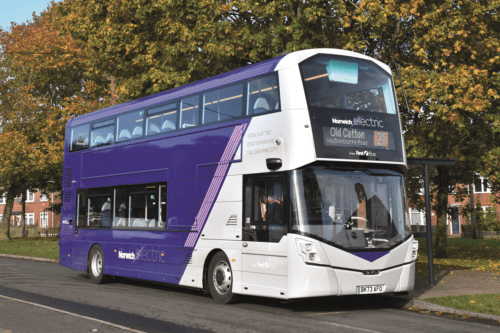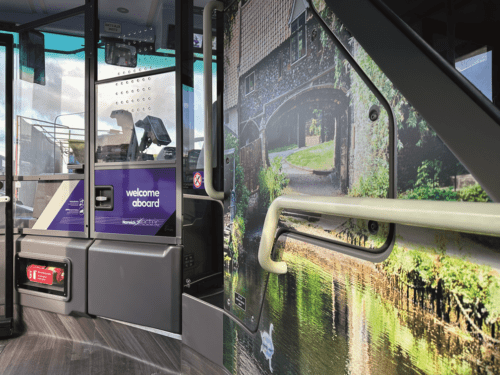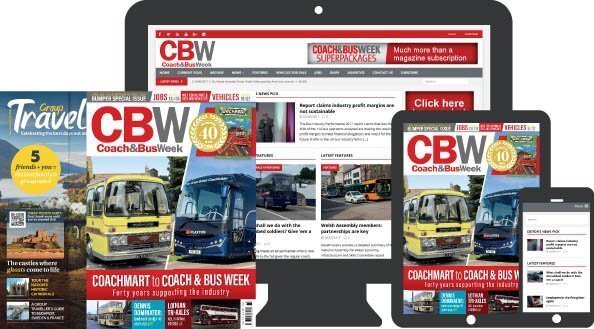
…David Jordan reports from Norwich, where the city’s new fleet of electric buses has recently entered service
Norfolk’s county city of Norwich is not somewhere that would traditionally be expected to be at the forefront of a notable development or innovation in public transport. The cathedral city’s tramway network, which largely heralded the start of mechanised transport for the masses, opened in 1900 and only received two small batches of open-top, open platform first generation tramcars to serve its 15 mile system before being sold to the fledgling Eastern Counties Omnibus Company and promptly closed down in favour of motor buses after only 35 years of operation.
From that time, it was another 50 years before public transport underwent any further notable change, when Norwich became one of the cities across the UK to utilise high-frequency, low capacity minibus operation in order to aim to revitalise its network. At the time, ever reducing passenger numbers were being carried on an outdated, overly complex network of services that had not evolved to meet the changing shape of the city’s residential areas which, as the population increased, had simply led to unsustainable levels of congestion across the (also largely outdated) road network. Rather, the focus had been on maintaining, as far as possible, rural routes which the operator clearly felt a social and political obligation to continue running.
Despite the vast numbers of new drivers employed to deliver these new minibus services being largely ostracised by the existing ‘big bus’ drivers (the canteen even being split into ‘big bus’ and ‘minibus’ tables) the introduction of the modern fleet of Ford Transits, Freight Rover Sherpas and Mercedes-Benz 0608D vehicles were a marked improvement in passenger comfort over the Bristol VRs and Leyland Nationals that made up almost the entirety of the remainder of the fleet and it could be said were really the first step in developing and evolving into the core city network utilising frequent, simple routes along key corridors that is in place today and matches the almost entirely ‘hub and spoke’ layout of the city and its suburbs.
Deregulation
Having been sold to its management by the National Bus Company at deregulation, Eastern Counties Omnibus Company passed to GRT Holdings in 1993 and subsequently became part of First Group when the merger between GRT and Badgerline Holdings took place a couple of years later. As the well known, and frequently documented, fortunes of First Group rose and fell over the following years, so did those of the now First Eastern Counties Buses. Many of the long established, but not exactly thriving, rural and interurban services passed to a number of independent operators or disappeared entirely, whilst the bus fleet varied vastly in both quality and age profile between batches of modern low-floor single deckers and some fairly elderly cascades from elsewhere in the Group’s bus divisions.

However, despite this often difficult period, patronage on the urban network within Norwich grew consistently as the city experienced a prolonged period of growth in population, employment and educational facilities which is maintained to this day. Whilst also leading to increased competition on a number of corridors from two independent operators subsequently purchased by the Go-Ahead Group, this increased positivity towards the bus led to the city network being handed over to low floor double deck operation during the early years of the new millennium, with batches of fairly modern, fully refurbished Plaxton President buses on both Volvo and Dennis Trident chassis being cascaded from service in London.
[…]By subscribing you will benefit from:
- Operator & Supplier Profiles
- Face-to-Face Interviews
- Lastest News
- Test Drives and Reviews
- Legal Updates
- Route Focus
- Industry Insider Opinions
- Passenger Perspective
- Vehicle Launches
- and much more!


